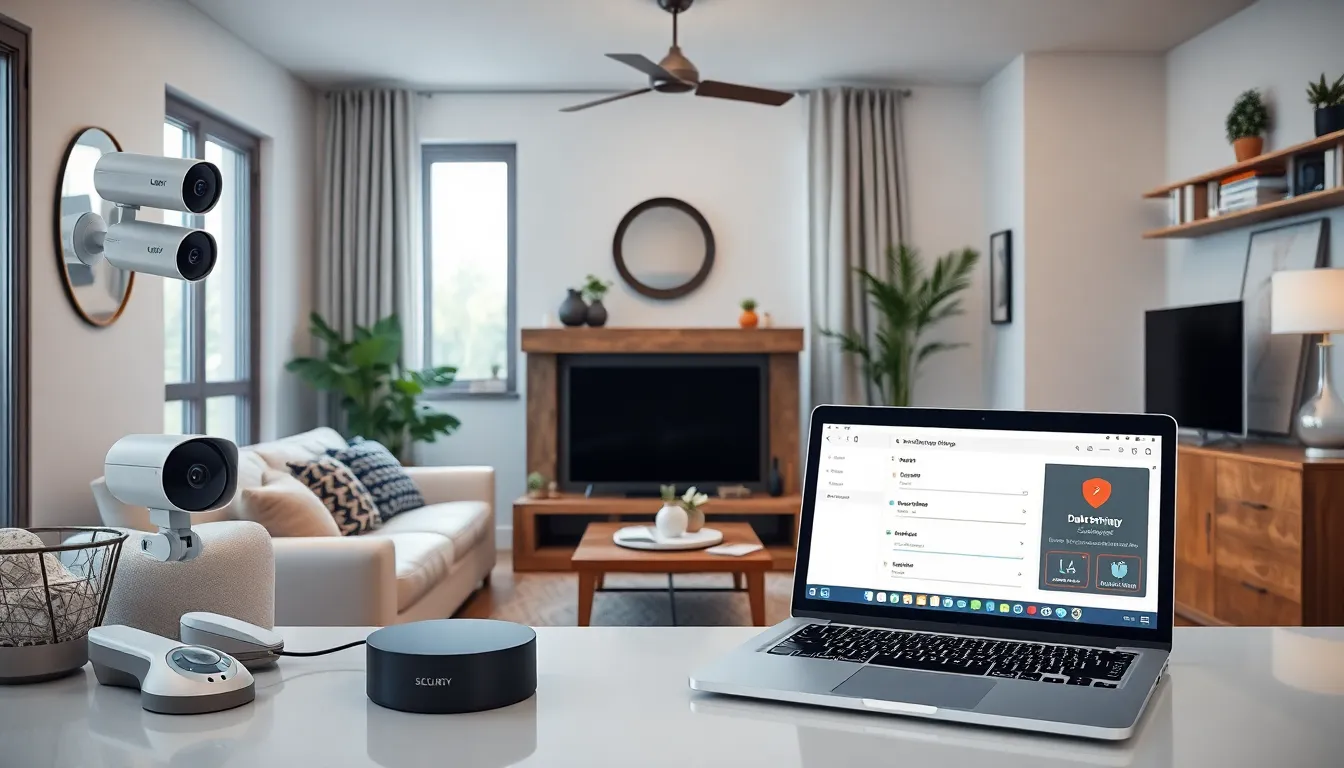In an ever-evolving world, home security has become a top priority for homeowners. With advancements in technology and a growing awareness of safety, trends in home security are shifting rapidly. From smart devices to integrated systems, people are increasingly looking for innovative solutions to protect their homes and loved ones.
As crime rates fluctuate and new threats emerge, individuals are reassessing their security measures. This article explores the latest trends in home security, highlighting how technology is transforming the way people safeguard their properties. By staying informed about these developments, homeowners can make smarter decisions and enhance their peace of mind.
Table of Contents
ToggleEmerging Home Security Technologies
Innovative technologies are shaping the future of home security. Homeowners increasingly adopt advanced solutions to enhance protection and convenience.
Smart Home Devices
Smart home devices play a crucial role in modern security systems. These devices include smart locks, video doorbells, and security cameras. Smart locks allow users to manage access remotely, sending notifications of entry attempts. Video doorbells provide real-time video feeds, enabling homeowners to monitor their doorsteps from anywhere. Security cameras can integrate with smartphone apps, offering alerts and live streaming. According to a market report, the smart home device market is projected to reach $174 billion by 2025, reflecting a significant trend towards connected security solutions.
Artificial Intelligence in Security Systems
Artificial intelligence (AI) enhances security systems by improving threat detection and response capabilities. AI algorithms analyze video feeds, identifying unusual behavior or suspicious activity. This technology reduces false alarms and allows for quicker responses to genuine threats. In 2022, AI-driven security solutions saw a 25% increase in adoption among households, indicating a growing reliance on automated systems. AI also provides predictive analytics, helping homeowners anticipate potential risks based on neighborhood crime statistics.
Increased Focus on Cybersecurity

The emphasis on cybersecurity within home security systems has intensified as homeowners increasingly integrate smart devices into their residences. Cyber threats now represent a significant concern, necessitating proactive measures to safeguard personal data and home networks.
Protecting Smart Home Devices
Protecting smart home devices involves implementing robust security protocols. Homeowners should regularly update device firmware to fix vulnerabilities. Using strong, unique passwords for each device minimizes the risk of unauthorized access. Employing network segmentation, by isolating smart devices from other home networks, adds an extra layer of protection. Utilizing two-factor authentication enhances security for devices and accounts, making it more difficult for intruders to compromise systems. Investing in security-focused routers provides additional capabilities to monitor and control network traffic, improving overall device safety.
Importance of Data Privacy
Data privacy stands as a critical aspect of home security. Smart devices often collect and transmit sensitive information, making data protection essential. Homeowners should review privacy settings for each device to limit data sharing with third parties. Familiarizing oneself with the manufacturer’s privacy policies reveals how data is stored and used. Encrypting sensitive information adds another layer of protection. Utilizing virtual private networks (VPNs) when accessing home networks remotely secures data transmission from potential interception. Regular audits of data access logs can help identify unusual activity, ensuring timely responses to potential breaches.
DIY Security Solutions
DIY security solutions empower homeowners to enhance their safety with ease and affordability. These solutions offer a range of options that cater to various needs and preferences.
Cost-Effective Options
Cost-effective options include a variety of security devices that fit most budgets. Homeowners can select from:
- Smart cameras: Available at prices ranging from $50 to $300, offering features such as motion detection and night vision.
- Home security alarms: Starting around $30, these systems include audible alerts and smartphone notifications.
- Door and window sensors: Priced between $10 and $50, these sensors notify homeowners if doors or windows are opened.
These budget-friendly options offer significant protection without the need for professional installation or monitoring contracts.
User-Friendly Installations
User-friendly installations ensure that homeowners can set up security systems quickly and easily. Many devices feature:
- Wireless connectivity: Allowing connections without complicated wiring, making setup straightforward.
- Mobile apps: Offering step-by-step guides and real-time monitoring capabilities for seamless management.
- Plug-and-play functionality: Requiring minimal technical knowledge to install and configure.
These features enable homeowners to implement effective security solutions independently, enhancing overall peace of mind.
Integration of Home Security with Smart Homes
Integration of home security systems with smart homes significantly influences how individuals protect their residences. Smart technology enables seamless communication among devices, enhancing overall security and convenience.
IoT (Internet of Things) Implications
IoT enhances home security by connecting various devices for real-time communication. Sensors, cameras, and alarms transmit data, allowing homeowners to monitor their properties remotely. A smart lock, for example, can send alerts when someone attempts to unlock it without authorization. According to Statista, the number of connected IoT devices is expected to reach 75 billion by 2025, underscoring the growing reliance on interconnected devices. Integration with IoT allows for automated responses, such as activating alarms or locking doors when a breach is detected, heightening protection against unauthorized access.
Enhanced User Experience
Enhanced user experience remains a crucial aspect of integrating home security with smart home systems. Users benefit from intuitive mobile apps that consolidate control of multiple security devices. Features like remote access management, real-time alerts, and customizable security settings provide convenience and flexibility. For example, homeowners can receive instant notifications when motion is detected or adjust camera angles remotely. Additionally, voice-activated assistants, such as Amazon Alexa or Google Assistant, facilitate hands-free control of security measures, improving usability. This combination of functionality and user-friendly design fosters a sense of security and peace of mind in today’s increasingly connected home environment.
Sustainable and Eco-Friendly Security Options
Sustainable and eco-friendly security options reflect a growing trend among homeowners seeking to enhance safety while minimizing environmental impact. As awareness of sustainable living increases, security solutions are evolving to incorporate energy-efficient and green technologies.
Energy-Efficient Systems
Energy-efficient home security systems play a crucial role in reducing energy consumption without compromising safety. Systems often include LED lighting, which uses 75% less energy than traditional incandescent bulbs. Smart sensors and cameras are designed with low-power components that activate only when necessary, conserving energy and prolonging battery life. Additionally, solar-powered security devices harness renewable energy, providing continuous operation while decreasing reliance on traditional power sources.
Green Security Technologies
Green security technologies leverage eco-friendly materials and innovative processes to ensure safety with minimal environmental footprint. Many manufacturers use recycled materials in their products, promoting sustainability in the manufacturing process. Monitoring services often employ eco-friendly packaging and shipping methods, reducing waste. Furthermore, advancements in artificial intelligence improve energy efficiency by optimizing system performance, ensuring resources are utilized effectively while maintaining robust security measures.
The landscape of home security is rapidly evolving as technology continues to advance. Homeowners are increasingly embracing smart devices and integrated systems to enhance their safety and convenience. With a growing focus on cybersecurity and the integration of AI, individuals can now better protect their homes from emerging threats.
DIY solutions offer affordable options for those looking to bolster their security without professional installation. As the trend toward sustainable and eco-friendly security options gains momentum, homeowners can achieve safety while being mindful of their environmental impact. The future of home security promises to be smarter and more efficient, ultimately providing peace of mind in an ever-connected world.



